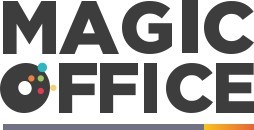
The Importance of Time in Project Management
The Significance of Timing in Project Execution
Time is a critical resource that holds immense value in project management. Efficiently managing time is not just about meeting deadlines; it is about optimizing every moment to enhance productivity. Each project manager understands that time, alongside other resources, is a fundamental component that directly impacts the success of a project.
In the United Kingdom, companies place a strong emphasis on strategic planning and resource allocation. The ability to effectively time tasks and allocate resources will help project managers keep projects on track. Every project manager utilizes time management techniques to ensure that team members are working efficiently, project tasks are aligned with strategic goals, and project resources are optimally allocated.
Advanced time management tools like Gantt charts, time tracking software, and resource planning applications allow for real-time tracking of resource utilization. This not only facilitates better resource scheduling but also assists in optimizing resource allocation. Understanding availability and management of resources project-wide can dramatically influence project outcomes.
One interesting approach to managing time more efficiently can be seen in the concept of optimising logistics with pool distribution in UK companies. This approach helps in better coordination and planning, reducing wasted time and increasing overall efficiency. Effective time utilization is not only about keeping projects timely but also improving the quality of work delivered by project teams.
Time Management Challenges in UK Companies
Common Time Management Pitfalls in UK Workplaces
UK companies face unique challenges when it comes to time management. With projects becoming increasingly complex, the need for efficient resource and project management is greater than ever. Managers often need to juggle competing priorities, and time is one resource that is frequently stretched thin. One of the key issues is the ineffective allocation of project resources. When team members are overloaded with tasks, the quality of work can decline, leading to delays and inefficiencies. Proper resource allocation is essential to ensure that projects stay on track and are completed on time.Time Tracking Challenges in the Work Environment
While time tracking is crucial for identifying where improvements can be made, many managers struggle to implement a robust system. Often, the software tools used are either overly complex or lack the flexibility needed for different types of projects. This, in turn, leads to inaccuracies in time reporting and can skew project planning efforts. The availability of reliable management software can help in overcoming these challenges by providing real time insights into how time is being spent, enabling effective resource utilization. With the right tools, managers can improve the accuracy of their resource planning and scheduling, ensuring that team members are neither overworked nor underutilized.Effective Communication and Planning
A common hurdle in time management is the breakdown of communication between team members and project managers. Miscommunication can lead to the misallocation of resources and missed deadlines. Therefore, a clear resource plan and open communication channels are essential for ensuring that everyone is on the same page. Implementing a Gantt chart for project tasks can serve as a visual resource scheduling tool, aiding in the effective tracking of progress across various stages of a project. In addition, leveraging management software can centralize communication and documentation, reducing misunderstandings and aligning the efforts of the team towards common objectives. For more insights on improving time management efficiency, consider reading about enhancing efficiency with a date book planner in UK offices on Magic Office's blog.Strategies for Effective Time Utilization
Maximizing the Utilization of Time in Project Management
In the realm of project management, effectively managing time is crucial. To optimize time utilization, project managers must apply strategic methods that align with project objectives. Here are some strategies that can help:- Prioritizing Project Tasks: By identifying and focusing on the most important tasks, managers can ensure that the team’s efforts are directed towards areas that offer the greatest impact. Using a Gantt chart can visually assist in this process, helping to allocate resources accurately and track the progress of tasks over time.
- Resource Planning and Allocation: Developing a comprehensive resource plan is necessary for successful time management. By determining resource availability and scheduling team members effectively, managers can prevent bottlenecks and maintain smooth workflow across projects.
- Leveraging Management Software: Tools and software dedicated to resource management and time tracking will help streamline project processes. Quantitative tracking of real-time data empowers managers to adjust plans dynamically, ensuring that both time and resources are utilized optimally.
- Encouraging Team Collaboration: Communication within the team is vital. When team members are aware of their roles and time constraints, they can plan and execute their tasks more efficiently. Establishing regular check-ins and open lines of communication can further enhance this process.
Balancing Time with Other Resources
Mastering the Equilibrium Between Time and Resources
Balancing time with other resources is pivotal in ensuring project success. In the complex landscape of project management, finding harmony between time, manpower, and finances is essential for efficient execution. To achieve this balance, a solid plan is crucial. Time tracking and management software can be invaluable tools for project managers, allowing them to monitor and allocate resources effectively. By utilizing these digital aids, teams can ensure real-time adjustments and make informed decisions based on the availability of resources. Project managers also need to consider resource scheduling as part of resource management. A detailed resource plan, often visualized through a Gantt chart, helps in identifying which team members are available for specific project tasks. This clarity avoids conflicts and overlapping assignments, ensuring that tasks are completed within the defined time frame. Resource allocation should be flexible to account for unforeseen changes. Projects often face unexpected challenges that require quick adjustments. Optimal resource utilization involves adjusting plans to maximize output without overburdening the team. It is about smart planning, not rigid scheduling. Lastly, integrating resource management tools within the workflow can improve the efficiency of resource allocation. These tools help in tracking not just time, but also the availability and usage of project resources. By understanding resource availability, project managers can preempt potential bottlenecks, thereby enhancing project efficiency. Balancing these elements will help UK companies navigate the complexities of project management. By aligning time with the right resources, teams can achieve project objectives seamlessly.Case Studies from UK Companies
Success Stories from the UK: Overcoming Time Management Hurdles
In the realm of project management within UK companies, effective resource planning is crucial for business success. To illustrate this, we look at examples from real-world scenarios that have successfully addressed time-related challenges. One noteworthy approach is the use of time tracking tools and management software which provide project managers with real-time insights into project progress. By monitoring how team members allocate resources and attend to project tasks, these tools facilitate better resource scheduling. This practice not only enhances the visibility of resource availability but also helps in identifying bottlenecks that may hinder project timelines. Several UK companies have adopted software solutions that integrate Gantt charts to streamline project planning processes. Gantt charts help managers visualize tasks and resource allocation—thereby aiding in efficient project resource management. This visual tool supports project managers in creating a comprehensive resource plan, ensuring that teams are adequately prepared to meet deadlines. Additionally, teams that utilise a collaborative approach to resource management have seen significant progress in handling time effectively. By regularly engaging with stakeholders and leveraging diverse team strengths, companies can optimize resource utilization across multiple projects simultaneously. Project managers, with a keen focus on resource allocation, often encourage leads to track resource availability and adjust plans accordingly to ensure project success. These practices, commonly deployed in various UK companies, not only improve time management but also bolster overall project outcomes. As we look towards the future, the continued refinement of these strategies promises further advancements in the project management field.Future Trends in Time Management for Projects
Emerging Trends in Project Time Management
With the rapid advancement of technology, project managers are witnessing a significant transformation in how time is managed across projects. As companies in the UK strive for efficiency, the integration of sophisticated management software is growing, enabling effective time tracking and resource utilization. These tools not only help project managers plan and allocate resources more efficiently but also allow real-time monitoring of project tasks, which in turn enhances decision-making.
Resource planning is evolving with cloud-based tools offering better flexibility and accessibility. This shift has allowed teams to seamlessly collaborate on tasks regardless of geographical boundaries, a trend further accelerated by the shift toward remote work environments.
Moreover, the importance of resource scheduling cannot be overlooked. Gantt charts and other visual tools are increasingly favored by project managers for their ability to map out timelines and ensure resource availability. This visual representation aids in the swift allocation of resources and helps in identifying potential bottlenecks before they affect the project timeline.
As companies aim to balance time with other resources, there's an emphasis on training team members to understand the nuances of resource management and how it ties into project success. This educational approach not only empowers teams but also ensures that project goals are consistently met.
Finally, there's a growing trend towards the use of artificial intelligence to predict and enhance resource allocation. AI algorithms can analyze past project data to forecast potential future challenges and optimize resource plans, providing project teams with a competitive edge in time management.
While these trends continue to develop, UK companies that embrace these innovations in time management will undoubtedly find themselves better positioned to navigate the complexities of modern project management.













